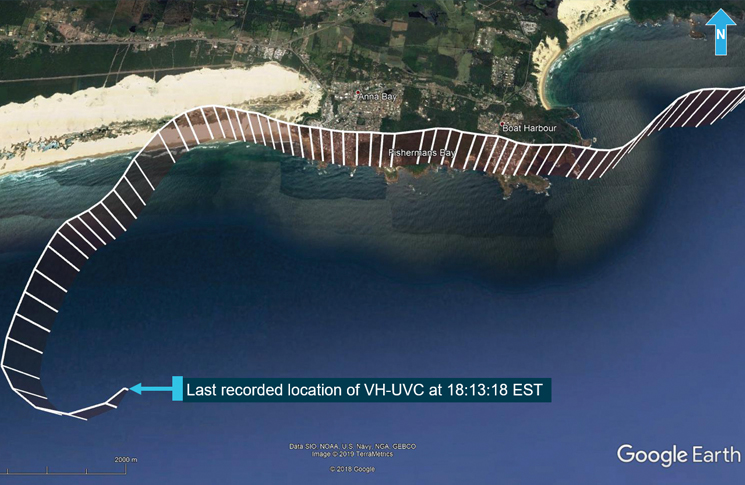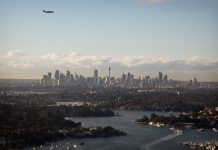
The pilot of a helicopter that crashed, killing 5 people, was not qualified to fly at night, and lost control after encountering the combination of turbulence and reduced visibility, the Australian Transport Safety Bureau’s (ATSB) final report into the crash says.
The report completes one of the ATSB’s more technically challenging recent investigations, in which data from ADS-B services, a tablet and mobile phone was used to recreate the aircraft’s flightpath, as Flight Safety Australia reported in February.
The crash happened in the sea near Anna Bay, north of Newcastle, NSW on 6 September 2019. The restored Bell UH-1H Huey helicopter was flying from Archerfield, near Brisbane, to Sydney, with the pilot and 4 passengers onboard. It stopped to refuel in Coffs Harbour and was nearing Broughton Island, near Williamtown, at 5.57 pm. Published last light for nearby Anna Bay was 6.01 pm, the ATSB report says.
At 6.05 pm, the Approach controller contacted the pilot to confirm that operations were normal, after noticing the helicopter’s altitude had dropped to 2700 ft. The pilot acknowledged the loss of altitude and commented about a wind gust affecting the helicopter. The controller responded by providing clearance for the pilot to operate between 2400 and 3500 ft. The pilot acknowledged this and commented again about the turbulent conditions. The controller acknowledged the conditions and made a further offer of assistance should it be required.
Shortly after, Williamtown ATC radar showed the helicopter make a left turn to the south, depart the VFR coastal route and head offshore.
The helicopter continued to track offshore to the south-west for about 90 seconds, maintaining between about 2500 and 3200 ft, before commencing a rapidly descending, left spiral turn. It disappeared from Williamtown radar coverage about 12 minutes after published last light.
The ATSB report found the tail boom had separated from the helicopter shortly before impact with the sea but that this was a consequence and not a cause of the loss of control. The report also found the pilot’s attitude indicator was not visible to the pilot due to the location of a tablet on the instrument panel. A second attitude indicator on the left side of the panel would have been difficult for the pilot to use, it found.
‘The pilot likely became spatially disorientated and lost control of the helicopter while flying in dark night conditions,’ the ATSB found.




